Welcome to A Seekers Guide to Glastonbury and it’s sacred sites, for those that are seeking the magic, with both feet on the ground. Here is my advice on the best way to visit a sacred site to make the most of the magic you’ll encounter.
A few tips to keep in mind when visiting a sacred site:
- Everything is frequency. Sacred sites also hold a specific frequency stronger than most. And we all hold our own frequency. Simply said some will resonate with you and some will not. Don’t take it personally.
- Do to give yourself the time and space to sit and see if you connect to the place.
In the wise words of Manon Tromp:
“Let go of expectations, go with the flow and take your time to let Avalon do what it needs to do”.
I also agree with Freddy de Silva’s views on why we visit sacred sites (paraphrased): Every sacred site we visit awakens a spark in us, and takes us forward on our journey of self-evolution. As each of us is on our own unique life pilgrimage, we will each experience it in our own way.
Which is why I put together my own Seekers Guide to Glastonbury;
A Pilgrimage to Glastonbury Tor

Glastonbury Tor is a magical spot. To connect and feel the energy of the land, I choose to walk up to the top of the Tor barefoot. Being so steep, every step was a reminder of how unfit I was feeling – I ended up feeling more out of breath than enlightened.
To keep myself going I imagined all the pilgrims that had walked the path before me. All the ceremonies and processions that the hill must have seen over the ages.
I hoped that by the time I got to the top that the veils would lift and Avalon would appear before me. Needless to say, that didn’t happen.
Instead I went and found a quiet spot to sit on the hill. A quiet place to sit and feel all that I couldn’t see. To connect to the energy of the site.
It was pretty magic.
If you find yourself at a sacred site do find a quiet place away from everyone else. A place to connect, to go within and meditate on what you feel and what emerges within you. Churches are often built on Sacred Sites, which were often built on the earth’s energy or Ley Lines.
Sacred sites have also had people making pilgrimages to them for thousands of years. Using them for their intentions, prayers and ceremonies. Put all this together and you end up with a magical energy for us all to tap into. Sit in the glow of those energies and let them share some of that subtle to strong magic with you. It is free to visit the Tor, you can find information on the National Trust’s Website here.
Getting your toes wet at Chalice Well
Chalice well sits at the bottom of the Tor, across the road from the White Springs. It is a small park that costs £4.50 to enter. It’s a peaceful garden, well tended and with many areas to sit and reflect and meditate.
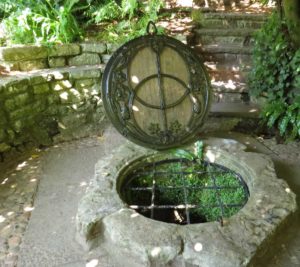
The ice cold red spring water at Chalice Well is the stuff of legends. One story is that the water gets its red colour from Joseph of Arimathea who added a few drops of Jesus’s blood to it. Another is that it is the spring of eternal youth and has healing properties.
The fact is the iron oxide gives the water the reddish colour. The well has been in use for thousands of years and is a constant 11 degrees all year around. There is a small pool you can walk through, and it’s pretty cold!
You can drink the water from the spot where you’ll find the lions head. Legends say it gives eternal life, I did have a drink so let’s see if that is true. Only time will tell.
It’s a lovely garden, and well worth the entry fee and a visit.
Chalice wellsprings is run by the trust, website here. Address: 85-89 Chilkwell Street.
Dive into the Sacred White Springs
The White Springs sit as the foot on the Tor, managed by volunteers and open in the afternoons. It is free to enter.
You can immerse yourself in these waters. The spring and its pools are lit by candlelight. While I stood in the darkness and I wasn’t sure if I wanted to risk slipping across the cold stones into a pool of water.
So I drank some instead and wet my feet with it outside and hoped that would suffice.
The White Springs website can be found here. Address: Well House Lane.
Time Travel to Glastonbury Abbey
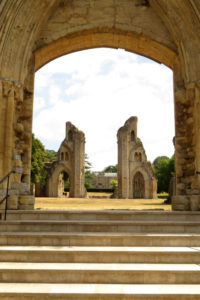
At a cost of £7.50, I had to consider whether it would be worth it to see an old ruin. The curiosity of seeing King Arthur’s tomb and the original church of Joesph de Armithea drew me in.
I am so very glad it did. The museum itself wasn’t that interesting. And I have my doubts that King Arthur ever existed let alone lay there. Rumour has it this was most likely the churches medieval money-making marketing ploy.
So while I didn’t see a tomb fit for marketing, or bones. I did have the pleasure of visiting one of the oldest medieval kitchens in Europe. And a chance encounter with Alice from the 1500s.
Alice was busy working and complaining about how a woman’s work is never done. Before beginning her story of the kitchens and abbey’s history. We sat down and had a nice long chat about ages past.
I heard that my fellow countryman from the Low Lands (Netherlands) visited the abbey in the 1500s. Brought over for their skills in silk weaving with the intention to teach those skills to locals. It was believed they spent time living in the kitchen of the Abbey. They never did have the opportunity to pass on the skills. They fled when Catholic King Henry came into power. As did most Protestants to avoid prosecution.
I did the day tour with Alice later in the day, and also learnt that the Abbey was at once the richest in the country. Pilgrims and visitors coming from far and wide to visit the holy site, seeking to clear their sins.
 Luckily the wealthy people had the most sins. Which they could absolve for the right amount of money. Which is why the wealthy landlords left all their holding to the abbey in the hope of eternal redemption.
Luckily the wealthy people had the most sins. Which they could absolve for the right amount of money. Which is why the wealthy landlords left all their holding to the abbey in the hope of eternal redemption.
Now in a cruel twist of fate, it is the same wealth that destroyed them. The greedy king, who had spent all his money on war decided to put the abbot on trial. The abbot was found guilty, hung and quartered at the top of the Tor. The Abbey ransacked and it’s wealth sold and left to ruin.
You can enjoy the interesting stories and rich history by taking one of the guided walking tours that is included in the entrance fee. There is a tour every hour until 4 PM.
The Glastonbury Abbey website is here. Address: Magdalene Street.
St. Margaret’s Chapel and Almshouses
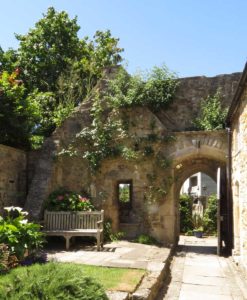
This is a quiet secluded garden off the street. At the entrance, You’ll find a finger labyrinth, which is a meditation in itself and fun. You can pray or meditate in the small old chapel or garden. The little courtyard almshouses were once hospital rooms built in the 11th century.
One of them is open and set up with furniture from the era. You can see how small yet gracious it was. Those that had to stay would have been well looked after.
While the walls of the courtyard in ruin from the onslaught of time. There are lovely details to the garden and can see that the place is up kept with love. Address: 46 Magdalene street.
Wearyall Hill and the Holy Thorn
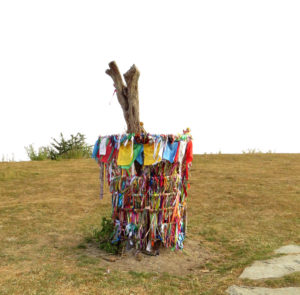
The Holy Torn, is where the original staff of Joseph of Armithea took root and grew, the tree is still there. It pains me to write that vandals killed and chopped branches from the tree. So it isn’t half of what it once was.
The tree, or the remaining stump is still there and still holds an incredible energy. I recommend putting your hands on it and feeling it’s warmth.
It costs nothing to visit, and has great views over to the Tor and the rest of Glastonbury.
More Magical spots to visit
Glastonbury is full of unusual shops, people and places that you won’t find on your average High Street. From the magic shop like the Cat & Cauldron, where you can buy a real wand, staff or a host of other magic book and paraphernalia.
Lovers of the Esoteric and metaphysical books can visit Avalon Library. In the same arcade 2-4 High street, is Star Child, an incredible essential oil and herb shop. And upstairs you’ll also find the Goddess Temple. Which hosts speakers and events most nights of the week.
Anyone for cuppa tea & a scone?
The Abbey Tea Rooms has stunning views of the ruins and some of the best Tea + Scones with clotted cream and jam and other English goodies which will give you the energy to climb the Tor or walk the Abbey gardens. Address: 15 Magdalene St.
For those that might be looking for a stronger sacred drink, the George’s hotel and Pilgrims Inn is a lovely old fashioned English Pub in a well preserved medieval building.
You can even book a night and stay over the inn, if you dare, its known to be haunted and you can read about a few spectral accounts and ghost stories of the Inn.
Where to Stay in Glastonbury
I was lucky enough to spend 3 weeks doing a work exchange through Workaway at Earth Spirit Centre. Incredibly lucky to met some truly magical people. The centre also runs incredibly workshops throughout the year, so be sure to check their calendar to see what’s on.
AirBnb is also highly recommended, particularly Earth Mama’s House that is run by Manon Trump. Manon also runs tours to sacred sites including Stonehedge and Avesbury.
The Magic never ends
Glastonbury can be many things, quirky, magical, spiritual and at times over the top. Is it a reflection of our inner selves, is it whatever we want it to be (yes, be prepared for fairies and men with arrows and crossbows walking along the high street).
It can have moments of feeling like it is spirituality gone mainstream. Yet, it is still enchanting. The people I met there is that they are all doing whatever they want, being whoever they want and living life as they want – blissfully content.
In this crazy world – maybe this is the sanity of it all. There isn’t any seeking, but an authentic way of being. And that, in itself is kinda Magical.
For Further reading:
Freddy de Silva’s Website. Freddy de Silva’s book: The Divine Blueprint.
Manon Tromp’s Website, you can also find her on the Mystical Tours website.
Anyone interested in visiting Avesbury Stones can read more here.
 You can visit many of the historic buildings for free, and find them manned by volunteers who are both passionate and knowledgeable. They’ll be happy to guide you around and answer questions.
You can visit many of the historic buildings for free, and find them manned by volunteers who are both passionate and knowledgeable. They’ll be happy to guide you around and answer questions.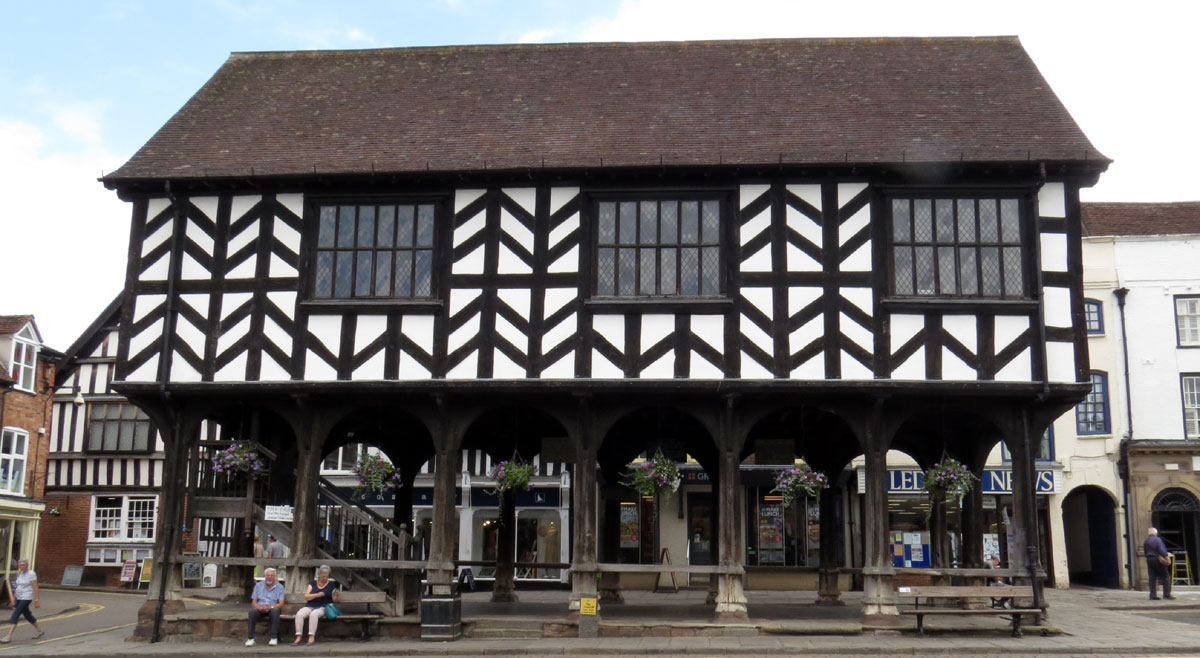
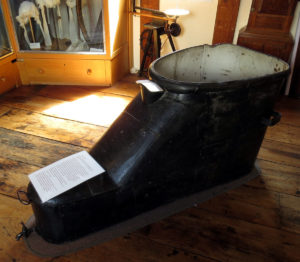 Was built in 1581 and was originally located on the main street. Yet, they moved it to make the street wider in 1979.
Was built in 1581 and was originally located on the main street. Yet, they moved it to make the street wider in 1979. 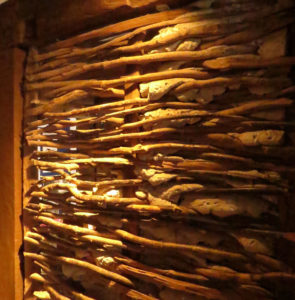 Old Grammar School
Old Grammar School The Painted Room
The Painted Room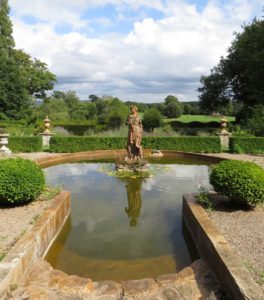
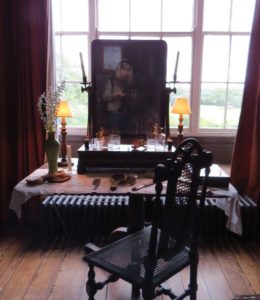



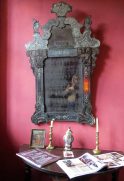
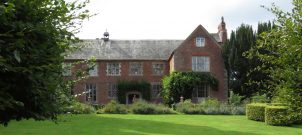

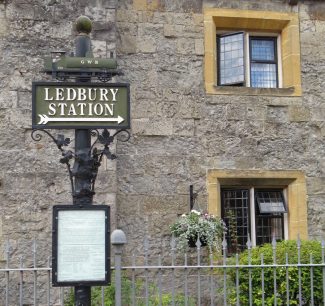
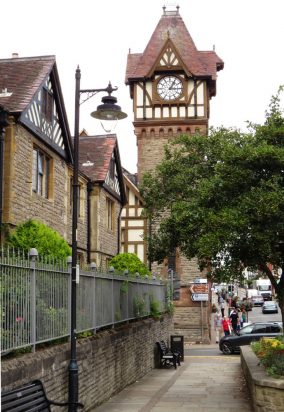
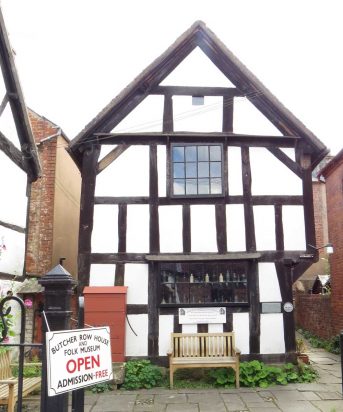

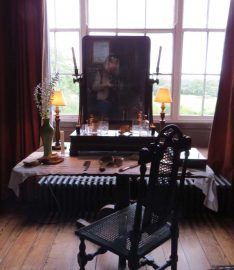
 Cathedral of Cloth, Ebley Mill Walking Tour
Cathedral of Cloth, Ebley Mill Walking Tour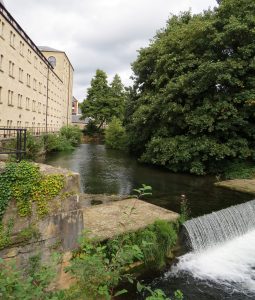 are mentions of two mills being near this site as early as the 1300’s.
are mentions of two mills being near this site as early as the 1300’s.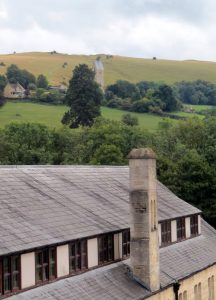 The wool was as much for survival in a cold and rainy climate, as it was for fashion. There is nothing as sustainable, warm & weatherproof.
The wool was as much for survival in a cold and rainy climate, as it was for fashion. There is nothing as sustainable, warm & weatherproof.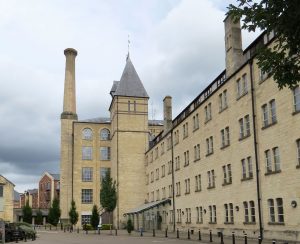 measure of tough times in it’s past.
measure of tough times in it’s past.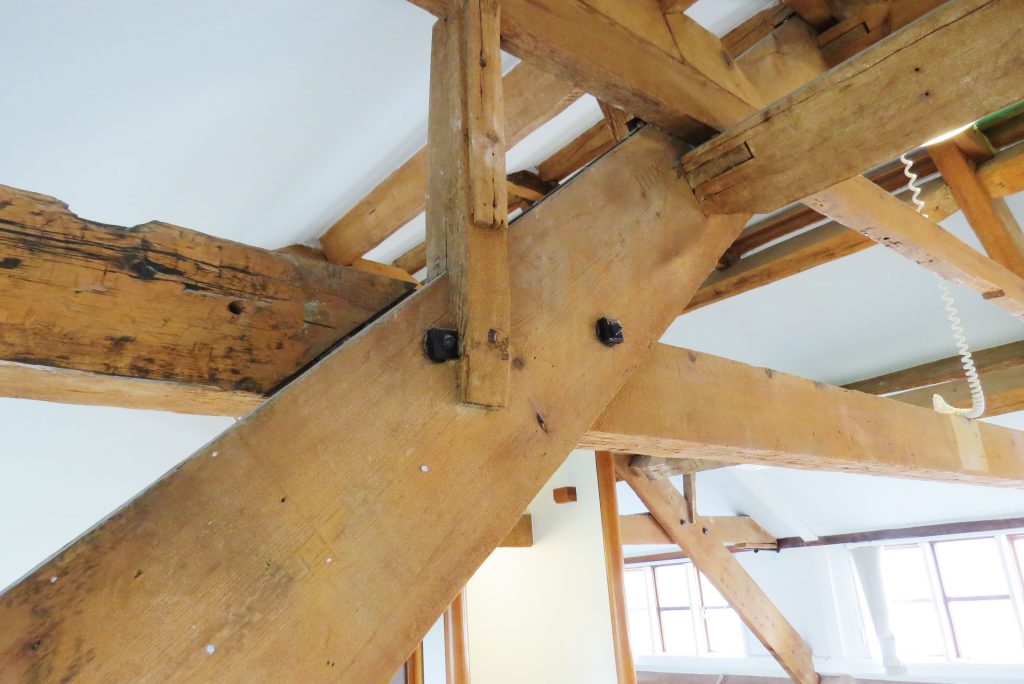
 The tour put on by the Stroudwater Textile Trust, gives us the opportunity to see the behind the scenes. We got a wander through the building and see the touches of the mills past. A past etched into the beams and walls.
The tour put on by the Stroudwater Textile Trust, gives us the opportunity to see the behind the scenes. We got a wander through the building and see the touches of the mills past. A past etched into the beams and walls.




 Luckily the wealthy people had the most sins. Which they could absolve for the right amount of money. Which is why the wealthy landlords left all their holding to the abbey in the hope of eternal redemption.
Luckily the wealthy people had the most sins. Which they could absolve for the right amount of money. Which is why the wealthy landlords left all their holding to the abbey in the hope of eternal redemption.














